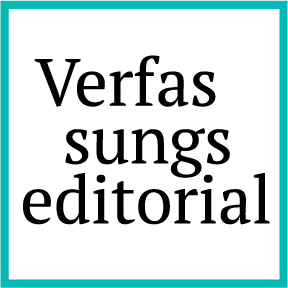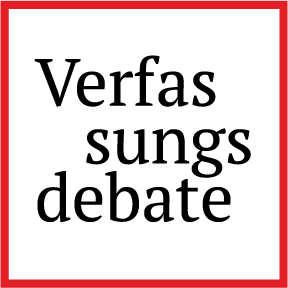06 December 2025
Lost in Translation?
Judicial conversations and interactions take place in different settings – sometimes behind closed doors, sometimes out in the open. One open form of conversation is the use of comparative analysis in legal arguments. Focusing on comparative arguments in policy discussions on the right to a healthy environment within the Council of Europe, I will argue that comparative arguments are too often cursory and superficial and that calls for the transferral of elements from one human rights system to another tend to underestimate the complexities involved in such legal transplants. Continue reading >>
0 
15 July 2025
The Right to a Healthy Environment as a Catalyst for Urgent and Ambitious Climate Action at the IACtHR
The right to a healthy environment is at the heart of the landmark Advisory Opinion 32/25 (AO-32/25) on the climate emergency from the Inter-American Court of Human Rights (IACtHR). AO-32/25 marks the clearest ruling to date from an international court on the urgency of transformative changes to address the existential threat of the planetary environmental emergency caused by human activities. Continue reading >>
0 
17 April 2025
Upcycling, the Ongoing Battle
In recent years, upcycling has seen a surge in popularity thanks to its positive impact on sustainability and the circular economy due to consumers’ increasing attention to the environment. As a result, individuals, artisans, and small companies have enthusiastically embraced the practice as a central part of their activities and a way to reduce waste. However, with fame often comes unwanted attention, and the growth of upcycling practices has led to various legal challenges against independent upcyclers based on the argument that their products violate intellectual property (IP) rights. Continue reading >>
0 
15 April 2025
Fashion Upcycling and the Human Right to a Healthy Environment
With new collections each season, the fashion industry produces a highly problematic fashion garbage heap every year. Circular economy projects seeking to produce “new” garments by reworking second hand and unsold fashion items have particular societal value against this background. Evidently, legal solutions that support fashion reuse have particular relevance in the light of these goals. Continue reading >>
0 
12 April 2025
Fast Fashion, Slow Transition
In the new ultra-fast fashion era, garment production cycles are accelerated to new heights, while the quality of the garments deteriorates. Key characteristics of the industry are its reliance on cheap manufacturing, overconsumption and short-lived garment use. This blog post will set out who is responsible for the protection of human rights from climate change within the textile industry. In a second step, this blog post aims to analyse the EU Strategy, focusing on the intersection between environmental and social rights in the textile industry. Continue reading >>
0 
08 April 2025
The Human Right to a Healthy Environment from an EU Charter Perspective
Over the last five years, there has been a noticeable turn towards human rights in climate litigation. In the same period, European climate legislation has evolved into a considerable legal framework. This warrants the question of whether there has been a similar turn to human rights before the Court of Justice of the EU – especially as Article 37 of the EU Charter of Fundamental Rights consecrates the “principle” of environmental protection. Continue reading >>
0 
07 April 2025
Why Recognizing the Right to a Healthy Environment Would Strengthen the Environmental Human Rights Framework under the European Convention on Human Rights
The ECtHR lacks a mandate for general measures aimed at redressing or preventing environmental harm as such. Only the introduction of the environment as the object of human rights protection, through the Right to a Healthy Environment, could trigger the necessary conceptual shift and legitimise the Court and the CoE Committee of Ministers to require member States to take measures such as mitigation of environmental risks and ecological redress. Continue reading >>
0 
04 April 2025
The Status of the Right to a Clean, Healthy and Sustainable Environment Under Customary International Law
The recognition of a right to a clean, healthy, and sustainable environment remains contested under customary international law. Some view recent UN resolutions as evidence of its emergence, while others argue they merely reinforce existing obligations. The Human Rights Council and General Assembly have acknowledged this right, but states differ on its legal impact. As the International Court of Justice examines the issue, the focus is shifting from recognition to implementation, with institutions now working to monitor and enforce environmental human rights. Continue reading >>03 April 2025
Intellectual Property and the Human Right to a Healthy Environment
With the effects of climate change escalating, there has been a notable increase in discussions about the, at first glance, not obvious impact of IP protection on environmental sustainability. At the same time, considerations of human and fundamental rights in the context of IP protection are increasingly shaping the legal discourse. Given these two major trends in IP law – growing attention to environmental sustainability as well as to human and fundamental rights – it seems that the time is ripe to explore what the human right to a healthy environment might mean for IP. Continue reading >>
0 
19 November 2024
The Brumadinho Disaster
In 2019, the rupture of a dam in Brumadinho unleashed a “torrent” of mining waste, destroying homes, contaminating the Paraopeba River, and killing 270 people. The dam was owned by the mining company Vale and its safety audited by the German TÜV Süd. More than five years later, no one has been held accountable. However, according to international human rights standards, the Brazilian state must hold companies accountable. Continue reading >>
0 



